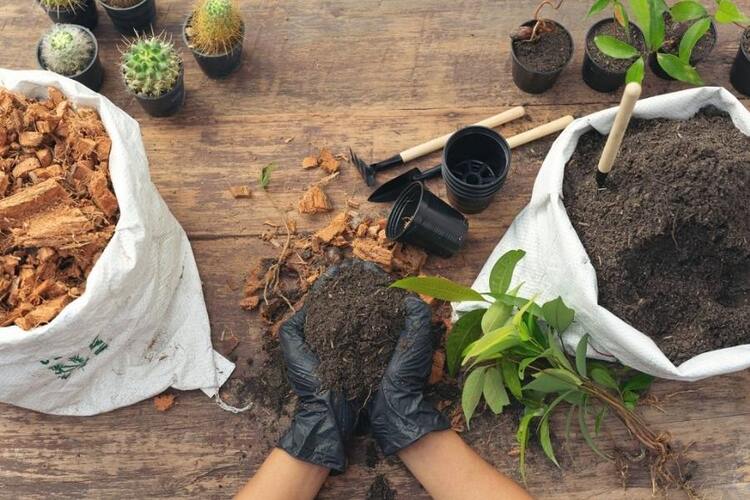How Much Does A Yard Of Topsoil Weigh? The Answer Is Here

Every time you dig holes, make beds, or fill in erosion spots in your garden, you need to prepare a large amount of Topsoil. How much does a yard of Topsoil weigh?
Yard topsoil weight will change if the ground has high moisture. You certainly will not want to have excess materials, waste a large amount of money, or continue to worry about the land after you have started working. If you have a project to complete and wonder above, do not miss any information in the article below.
How Much Does A Yard Of Topsoil Weigh?
A cubic yard of soil will weigh about 2000 pounds. However, the weight may change because of factors such as moisture, impurities, sediment, nutrients, and silt. Humidity has a significant effect on overall weight. Even a yard of water-saturated substances can weigh up to 3,000 pounds.
- The components: Its impurities, sediment, nutrients, and alluvium are also concerned. For example, with a top layer of dry sand, one yard would weigh about 2,600 pounds, while dry clay, although also at the top, would weigh only 1,700 pounds.
- Additional Materials: In some cases, the supplier may add substances to the mix to give you more nutrients or better drainage.
This addition will also affect the overall weight you receive. For example, if your mix has added wood chips, one yard will only weigh about 1,000 pounds, but the weight can vary depending on the specific composition.
If you go to a supplier specializing in providing filtered products, the final weight will be much higher. Because removing debris such as small sticks will make the soil much heavier when compared to untreated material.
Topsoil Overview
Soil is a mixture of plant roots, minerals, organic matter, microorganisms, water, and air pockets divided into many layers. Topsoil, as the name suggests, is the part of the top layer with a thickness of about 4–12′. Because of its upper position, this layer is composed of undigested organic matter, nutrients, minerals, plant roots, bacteria, small animals, mold, etc. An ideal top layer would be soft, smooth, rich in nutrients, loose, and breathable. Usually, this layer is also the main growth area for plant roots, especially those with shallow roots. However, you cannot always have the perfect growing environment, as described above.
In some cases, topsoil is slow-draining and poorly aerated when there is too much clay in its composition, or dry and poor in nutrients when it contains large amounts of sand. There is quite a bit of controversy about potting soil go bad regarding this top coating. For a long time, in some agricultural areas, farmers had the habit of taking off the top layer to flatten gardens and fields, thinking that the soil would be good again after a few years. In reality, it takes a long time for the Topsoil to form, so its removal is highly wasteful.
How To Calculate Topsoil Needed?
The measurement process of how much topsoil is needed for one cubic yard is critical. You need to make sure all calculations are correct to complete the project without making unnecessary mistakes like excess or lack of materials. Although this step is essential, you can completely calculate the amount of soil you need with a few simple steps.
First, you need to measure the overall area and depth of the garden, then apply the formula for volume: Volume = Length x Width x Height. Once you have all the necessary parameters, don’t forget to convert from inches to feet. For example, if your garden is 5 feet wide by 9 feet long and you want to have Topsoil 5 inches thick, which is 0.5 feet, applying the formula will get 5 feet x 9 feet x 0.5 feet = 22.5 cubic yard feet.
For the above result, you will need 22.5 cubic yards of soil. To convert units, you can apply the rule: 1 ft³ = 0.037 037 037 037 037 yd³. Finally, you should note that if the project space is circular, you will need to apply a different formula involving depth and radius.
How To Use an Online Topsoil Calculator?
The above formula is not complicated, but the problem lies in some issues related to the conversion. If you are not interested in the math above, you have a powerful support tool: an online calculator.
This tool can calculate weight in tonnes or volume accurately, serving your project. You need to choose the unit system to enter the dimensions (length, width, and depth). The rest of your work is just waiting for a few seconds to receive the results and determine the exact amount of materials needed for your job.
How Many Yards Is Suitable For A Pickup Truck?
The answer depends on the size of the truck bed, and standard carriers will have 6 feet long and 4 feet wide beds. The Pickup Truck will carry 2-3 yards of Mulch and 1.5 yards of topsoil.
Meanwhile, smaller models, such as mid-size pickup trucks, have a more modest load capacity. The maximum amounts of Mulch, stone, and Topsoil that this vehicle can carry are 1-2, 1, and 1 yard, respectively. The Pickup Truck is small; the amount of Mulch, rock, and Topsoil can carry only 1, ½, and ½ yards, respectively.
Conclusion
Spending on materials, when you start a project related to renovating, laying beds, and digging holes, will always cost you a lot of money. Therefore, before beginning to handle the job, you should consider: How much does a yard of Topsoil weigh?
Hopefully, the above helpful information has helped you answer this most exciting question and complete the gardening work efficiently and economically.
FAQs




